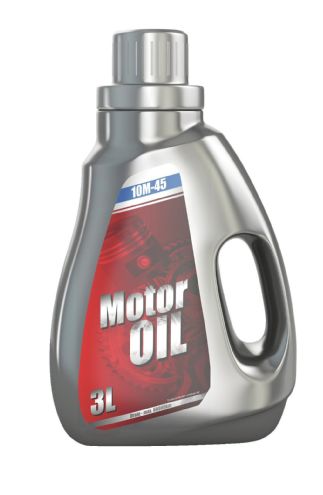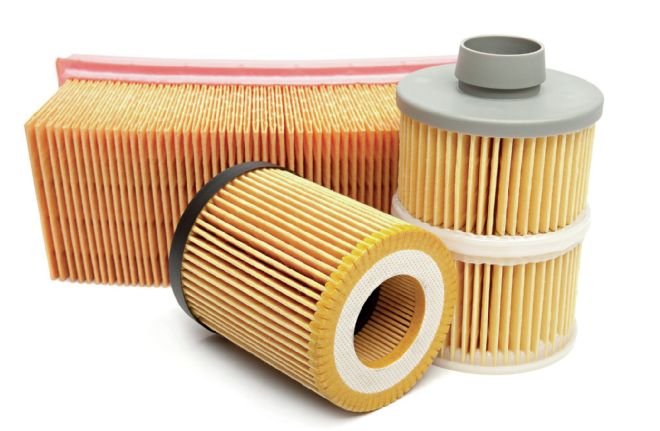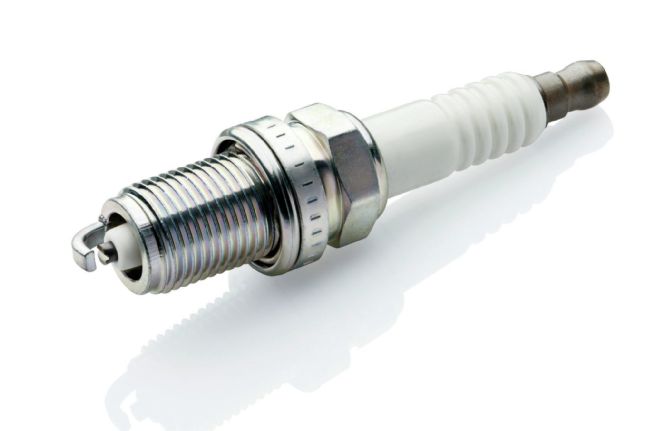Regular vehicle service has always been based on the heart and soul of your ride: the engine, and motor oil, which keeps it well lubricated and turning smoothly. For decades, drivers have relied on the script: change your oil every 3,000 miles or one year, whichever comes first. Some still do, but technology has produced a more precise method of determining when you’re really due for service.
Manufacturers typically document service schedules in the owner’s manual based on driving conditions, whether “normal” or “severe”. Normal being a nearly perfect environment, mostly highway driving, at or about 55 mph. Severe is pretty much anything outside the norm, such as stop-and-go traffic, extreme ambient temperatures, extended idle, towing, and so on. Under normal conditions, you can get away with changing engine oil at about 7,500 miles, but severe conditions require service intervals closer to 3k.
Business is business, so dealerships, independent repair shops, and oil change outlets recommended oil changes every 3,000 miles across the board, supported with a reminder decal in the upper left corner of the windshield. It’s still that way today, but late-model cars and trucks are getting smarter, by means of technology and onboard oil life monitoring systems.
There’s no question about it: Due to advances in engine design and motor oil production, you can go further distances between oil changes. However, driving conditions still play an integral role on exactly how far.
The simplest forms of onboard maintenance reminders are basically indicators that pop-up after a certain amount of mileage has accumulated since the system was reset at the last service. More recent versions include reminders for additional fluid and filter replacement, tire rotation, sparkplugs, etc. Some also offer a driver option to customize the due-mileage for each task, but this is just a digital translation of a windshield decal based on mileage.
Accurately monitoring oil life seems to be the path of the future. It not only extends service intervals and saves the driver money but also reduces motor oil use and waste. There are a few systems that actually test the oil with sensors, similar to sending an oil sample out to a lab. But as with most of the electronic gadgets we can’t live without, the trend is leaning towards an algorithm using powertrain data.
General Motors initiated the algorithm-type oil life monitoring system in the late ’80s on a limited number of production models. Since then, GM and several other manufacturers have slowly increased the production of similar programs. Instead of using strictly mileage, the vehicle’s powertrain control module looks at data fields such as coolant temperature, engine load, and engine speed. An algorithm is used to evaluate the longevity of the oil, and the results are communicated to the instrument panel to alert the driver.
Let’s take a look at the functionality of the American Honda Maintenance Minder system. It’s been in production since ’06, and it is somewhat advanced since it uses the oil life algorithm to help determine other services, aside from oil changes.

| Centec Code Reader
Reading Honda’s Maintenance Codes
Main Items:
A. Engine oil
B. Oil and filter, and a list of inspections
Note: You’re not going to find too many shops changing oil without a filter.
Sub Items:
1. Rotate tires
2. Air cleaner element, cabin filter
3. Transmission fluid
4. Spark plugs, timing belt, inspect valve clearance
5. Engine coolant
6. Rear differential fluid (if equipped)
You’re getting ready for a trip in a ’12 Honda Pilot. Turn the ignition on, and a “wrench” icon lights up on the instrument panel, along with a display showing a letter, numbers, and oil life percentage. What does it all mean? The Maintenance Minder Indicator (wrench icon) comes on when remaining oil life reaches 15 percent. This allows a comfortable window for the driver to have service performed before oil degrades to a point that it’s no longer providing optimal lubrication to the engine’s internal components. Keep driving and the remaining oil life will eventually decrease to 0 percent. Continue to ignore the warning, and the oil life percentage transforms to a negative mileage reading. This tells the driver the distance he’s been driving on insufficient quality oil. Still not getting the idea? Engine damage is the next step.
Messages get more dramatic when ignored. Between 15 and 1 percent, the Maintenance Minder indicator (wrench icon) comes on with the ignition but goes out if you shift the oil life display back to the odometer. At 5 to 1 percent, a capitalized “SERVICE” message appears. At 0 percent and after, the icon remains on at all times, and the oil life display flashes.
Let’s say you come in for service and the maintenance display is showing A-4. Timing belt, spark plugs, and a valve adjustment can run upward of $1,800 at a dealership, but you can’t afford it at this time. The oil change is complete, Maintenance Minder reset, oil life now showing 100-percent, and off you go. The only problem is sub Item 4 will not appear again for years, or possibly another 100,000 miles, even though the work was never performed. Dealership technicians do have the equipment required to reset only main item A, and sub item 4 will again display at the next service, but this is additional labor and is rarely done.
On the other end, you may come in for service with A-2 displayed. Meanwhile, you had both filters replaced at another shop a week earlier. This is why it’s still important to keep records of vehicle service and avoid missing the critical stuff or re-doing work already completed.
The resetting procedure of any maintenance system can be found in the owner’s manual. On our Pilot, you turn the ignition to the “on” position and press and hold the trip/reset button on the instrument panel until the oil life display begins to flash. Release, then press and hold the button again until oil life resets to 100 percent.
Service Basics
There’s always an exception to the rule, but for the most part, the old adage that OEM parts and fluids are of higher quality still holds true. Also, dealership technicians know the brand and model better than most independent shops. It’s good to keep that in mind when more complex diagnostics and repairs are needed.
Oil Change
Name brand oil is fine as long as it meets OEM specifications and viscosity. Some engines have very specific requirements due to mechanisms such as cylinder deactivation and variable valve timing, which rely on oil pressure to operate. OEM filters are the safest route, but there are lots of quality aftermarket filters on the market. Be careful though—instances such as low oil pressure from excessively dense filter media have occurred.
When you get home from a service, take a peak under the engine for oil droplets. It may just be residual from the oil change, but untightened filters and drain plugs are all too common.
Do not let anyone sell you a “crankcase flush.” Even with oil life monitoring it’s recommended changing the oil once a year, regardless.

| Motor Oil
Transmission Service
If there’s ever a time to use the manufacturer’s fluid, this is it. Newer automatics and CVT units can be very sensitive and very expensive. Follow the maintenance reminder or service manual. 30,000 miles is typically the default service interval.
Do not flush! There are lots of shops promoting a transmission flush, stating it replaces all the fluid as opposed to a percentage when performing a drain-and-fill. This is true, but servicing as per the manufacturer’s schedule dilutes the old with the new sufficiently to maintain quality fluid. There have been cases where internal transmission failures have occurred following a flush, possibly due to contaminated equipment, excessive pressures, and/or incorrect fluid. Even some dealerships will sell a flush service, even though there’s a manufacturer’s technical service bulletin stating not to.
Replace filter, if equipped. Some automatics do not require fluid service unless under extreme use. Standard transmissions require fluid changes less often due to lack of clutch contaminants, less friction, and lower operating temperature. Always use the correct fluid. Too high a viscosity can cause hard gear engagement in cold temperatures.
Filters
Not rocket science. Often it’s best to remove and inspect engine and cabin filters for dirt buildup before replacement. There are low quality aftermarket filters out there that don’t seal correctly, and the filter element can actually begin to disintegrate prematurely.

| Air And Fuel Filter
Rear Differential
Most differentials are now limited-slip and require an additive or specific formula (not just straight gear oil) to lubricate the differential clutches properly.
Noise from the rear axle while making tight turns is a symptom of degraded fluid.
Follow the manufacturer’s schedule, and be sure to perform figure-eights in a large parking lot following the service. This works the new fluid/additive into the clutches. Transfer Case
A no-brainer. Drain and fill with the correct viscosity gear oil or recommended fluid. Service intervals may be in line with the transmission’s.
Fuel Injection/Decarbon
Again, there are service bulletins specifically instructing customers and technicians not to perform a fuel injection service which utilizes a pressurized cleaner tapped into the fuel rail, unless instructed to during a diagnostic procedure. A fuel additive poured in with every few tanks of fuel is more than sufficient. Some OEMs actually recommend it.
Decarbon service may be helpful on high mileage engines. This procedure bleeds solvent into the engine’s intake while running to clean the backs of valves, pistons, and combustion chambers. Manufacturers of the supplies recommend the service as frequently as every 10,000 miles, which seems ridiculous.
Belts
Whether it’s a timing belt or a drive belt, rubber does degrade with time, not just mileage. Drive belt condition can be inspected externally, but a timing belt usually cannot. Stick with the owner’s manual schedule. It can be a 15-year-old truck with 20,000 miles, but the belt may have degraded over time enough to fail.
Spark Plugs
Go by the schedule or reminder, if equipped. Most plugs nowadays are 100,000-mile platinum. Believe it or not, non-OEM plugs can sometimes make an engine run like crud. Turbocharged engines may have shorter plug-change intervals.

| Spark Plug
Coolant
The recommended coolant service intervals are increasing with advanced coolant formulas. Go by the service schedule/reminder, but service should be more frequent in road-salt regions. There can be a significant difference in coolant system corrosion in areas where salt is used to de-ice roads.
Valve Adjustment
Only required with non-hydraulic valve lifter applications. Follow the schedule/reminder. Symptoms of a need for adjustment may be “ticking” or a “misfire”.
Fuel Filter
Fewer filters are being used in newer production. Replaced with a non-serviceable screen at the fuel pump in the fuel tank.
Brake Fluid
Varies by manufacturer. Some exclude brake fluid replacement. The example Honda Pilot has no maintenance sub item for brake fluid, but Honda stipulates every 3 years in the owner’s manual.
Power Steering Fluid
Another excluded service by several manufacturers, but you know lots of shops would like to sell it to you regardless. Maybe replace fluid at 100,000 miles if you’re planning on keeping the vehicle long-term. Not a factor with EPS (electric power steering) increasing in production.
Other Items
Brakes, tires, suspension, batteries, and the rest of vehicle should be dealt with following visual inspection, testing, or the beginning of symptoms.
Write To Us!
If you have a technical question regarding your pickup, SUV, or van, feel free to contact us! Send a letter care of Truck Trend Shop Class, 831 S. Douglas Street, El Segundo, CA 90245, or e-mail us at mail@trucktrend.com. Due to the volume of questions received every month, we cannot guarantee that everyone’s question will be personally answered or will appear in the magazine.
 | Centec Code Reader
Reading Honda’s Maintenance Codes
| Centec Code Reader
Reading Honda’s Maintenance Codes | Motor Oil
Transmission Service
| Motor Oil
Transmission Service | Air And Fuel Filter
Rear Differential
| Air And Fuel Filter
Rear Differential | Spark Plug
Coolant
| Spark Plug
Coolant